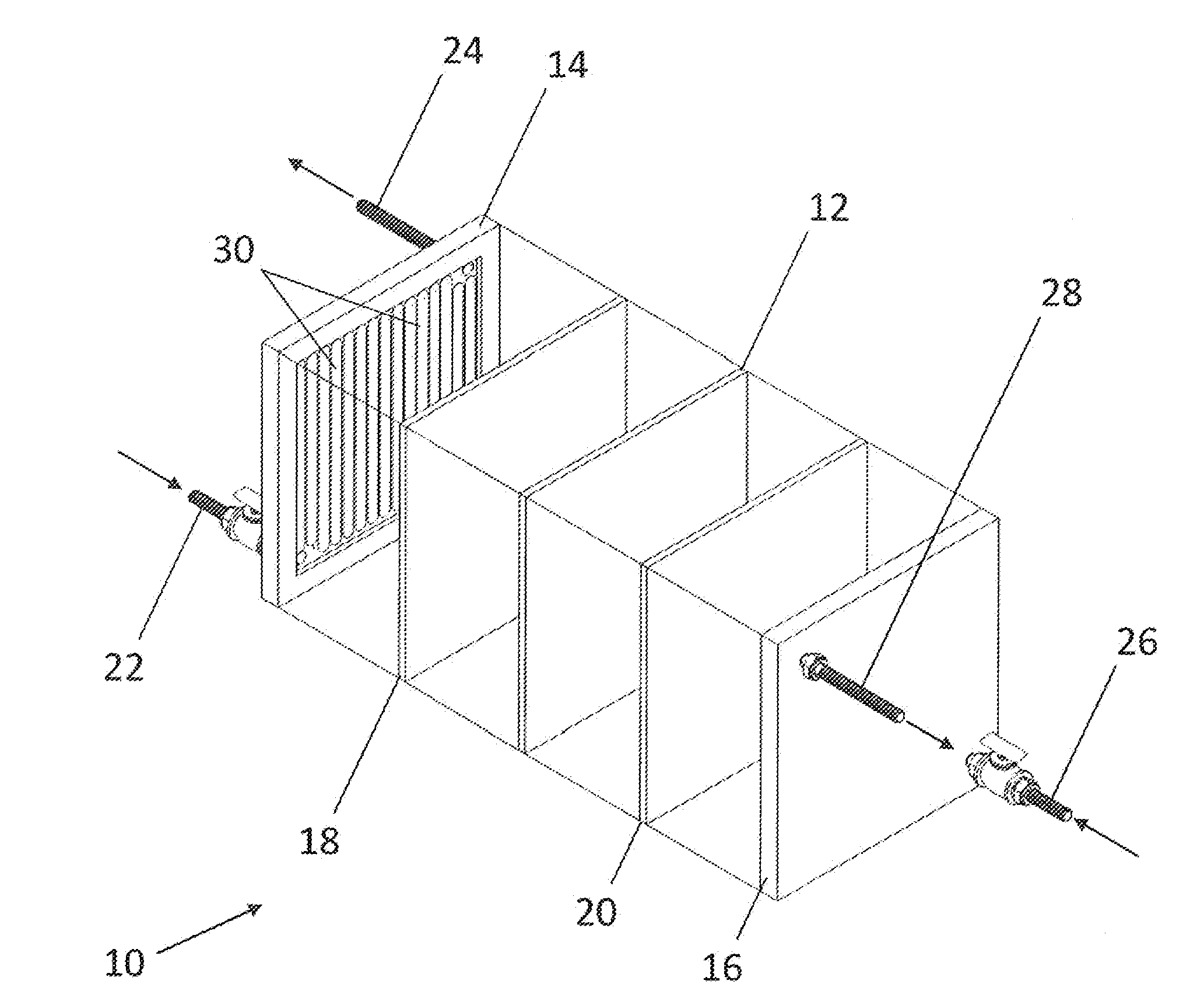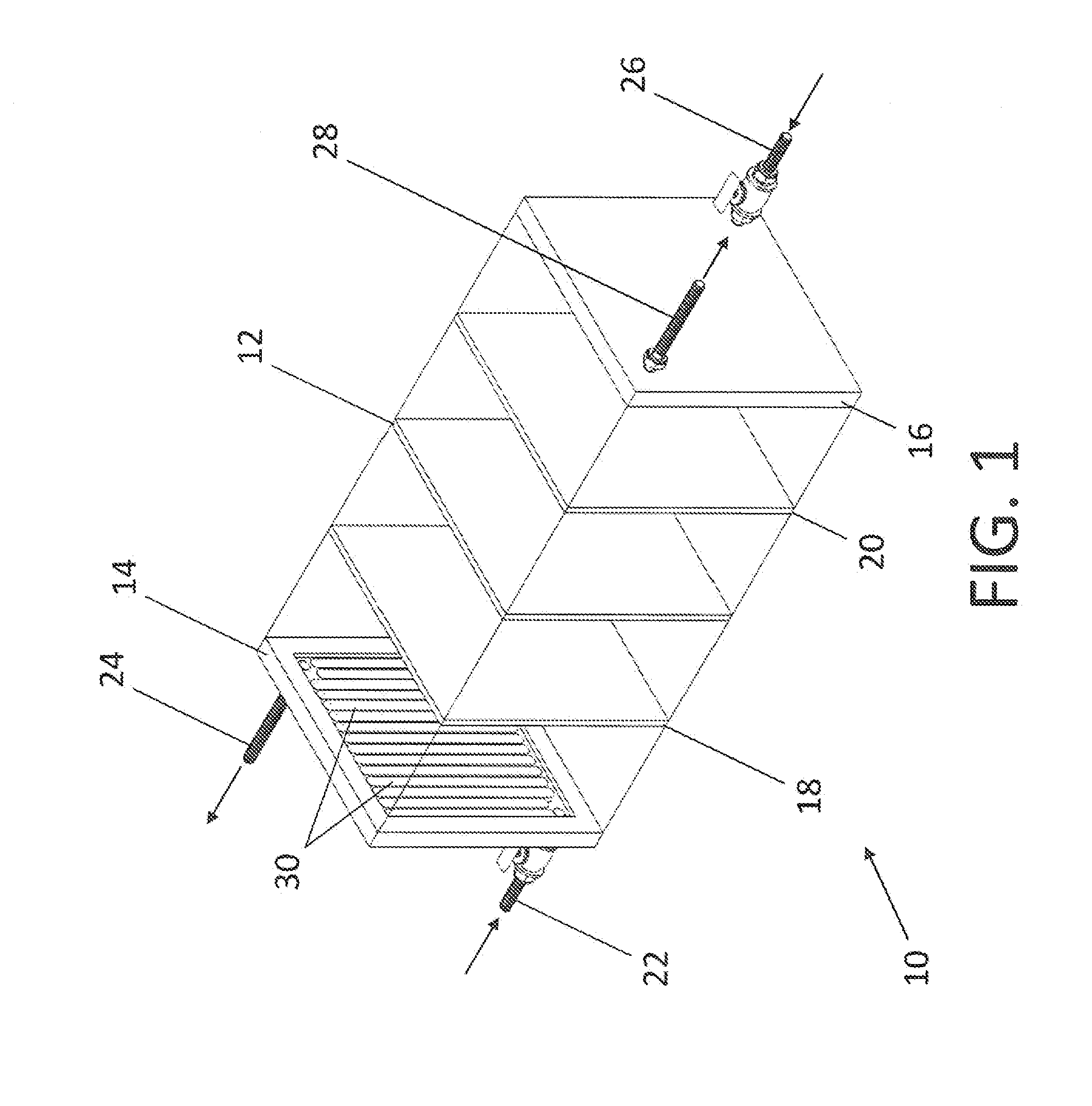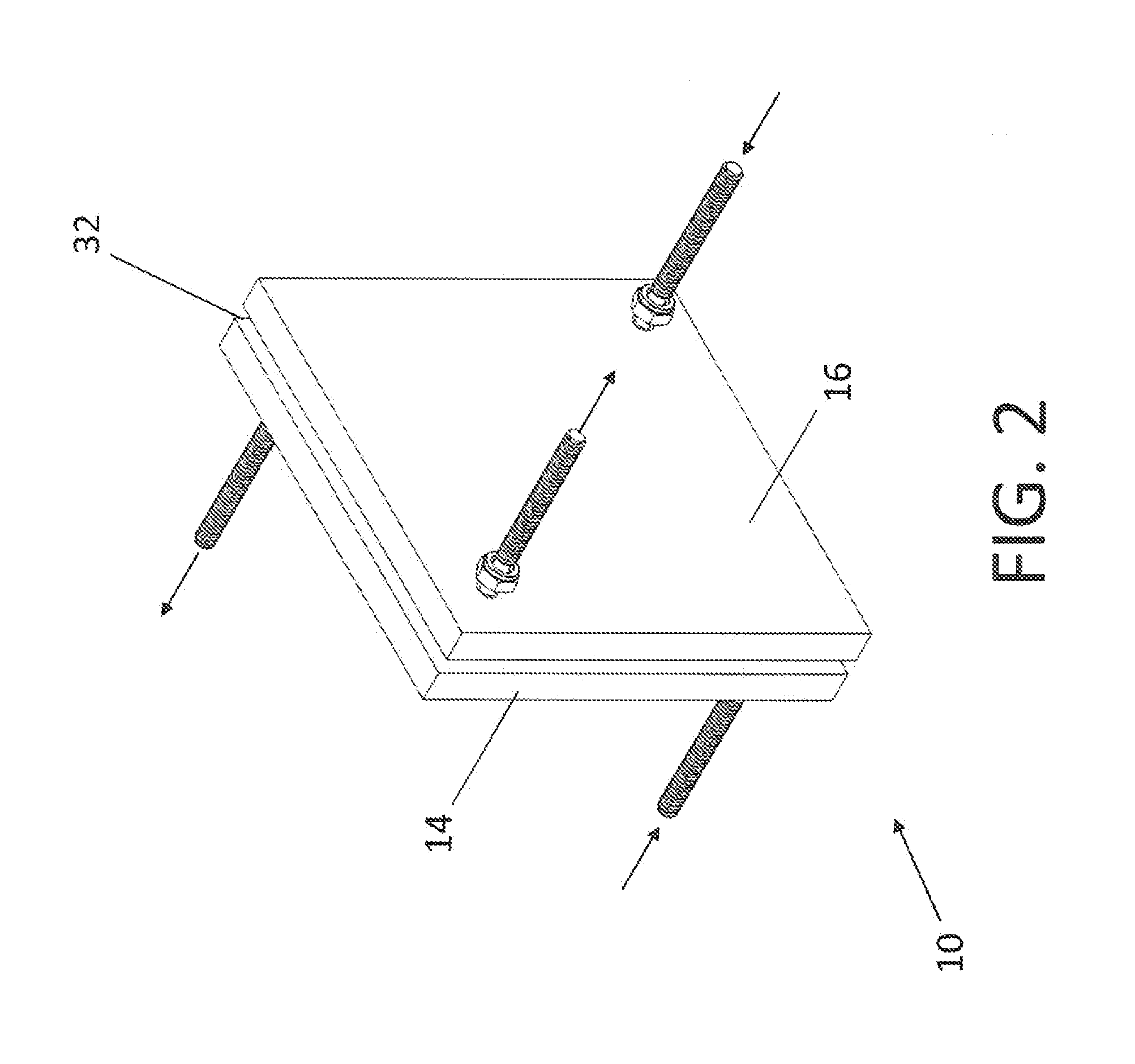Alkaline Membrane Fuel Cell
- Summary
- Abstract
- Description
- Claims
- Application Information
AI Technical Summary
Benefits of technology
Problems solved by technology
Method used
Image
Examples
Embodiment Construction
[0016]This description begins by explaining the basic components and construction of the present invention. More detail will be provided subsequently. Fuel cells have traditionally been constructed by sandwiching together the various components. The present invention is preferably assembled using this known technique, though other techniques may be used as well. FIG. 1 shows the components of alkaline membrane fuel cell 10 in an exploded state. Fuel manifold 14 lies to the left in the view. Proceeding from left to right, the other components are anode 18, alkaline membrane electrolyte 12, cathode 20, and oxidizer manifold 16.
[0017]Fuel manifold 14 receives a gaseous fuel (such as hydrogen) through fuel inlet 22. The fuel is circulated through a plurality of flow channels 30. which may assume any desired configuration. Parallel flow channels are depicted, but a serpentine flow path may also be used. Other known configurations may be substituted as well. Excess fuel leaves the fuel ma...
PUM
 Login to view more
Login to view more Abstract
Description
Claims
Application Information
 Login to view more
Login to view more - R&D Engineer
- R&D Manager
- IP Professional
- Industry Leading Data Capabilities
- Powerful AI technology
- Patent DNA Extraction
Browse by: Latest US Patents, China's latest patents, Technical Efficacy Thesaurus, Application Domain, Technology Topic.
© 2024 PatSnap. All rights reserved.Legal|Privacy policy|Modern Slavery Act Transparency Statement|Sitemap



